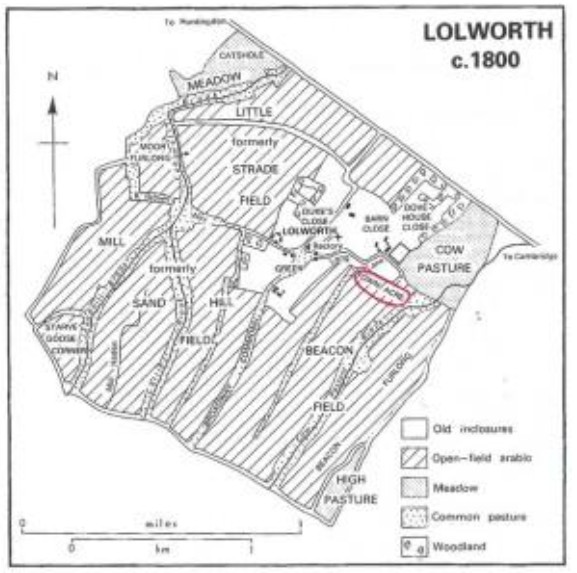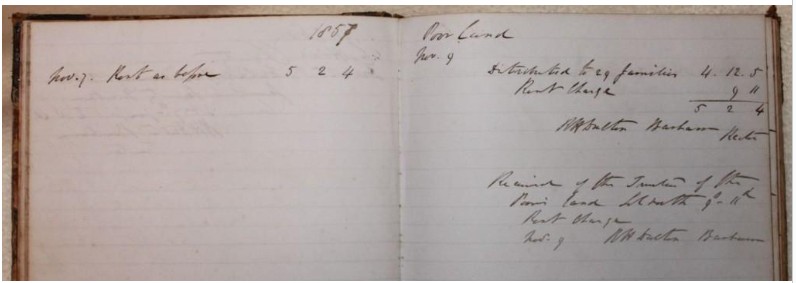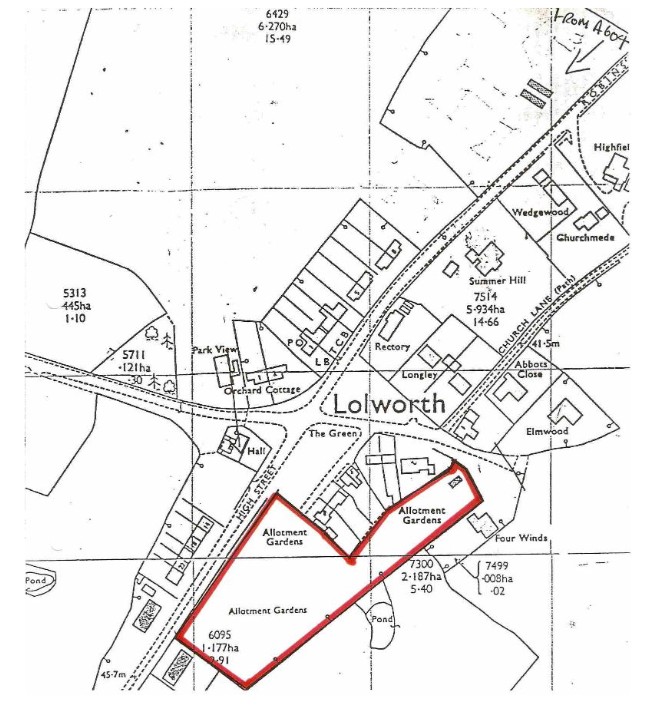Town Acre Charity
With the introduction of the Poor Act of 1601, a parcel of land known as Town Acre—situated in the open fields alongside Lolworth Village—was designated for the relief of the poor. This fertile pastureland was made available to impoverished parishioners for common grazing, providing a vital means of sustenance. However, it came with obligations, being subject to tithe, shackage, and sheep walk, ensuring it remained a shared community resource.
The landscape of Lolworth shifted significantly with the arrival of the Enclosures Act of 1848, which saw the loss of Town Acre as common grazing land. In compensation for this loss, 2.8 acres were set aside to create 29 allotment gardens, offering villagers a new means of growing their own food. A small cottage once stood among these allotments, but over time, it succumbed to the elements and eventually collapsed. These newly established allotments, nestled beside the High Street, became an enduring part of village life, ensuring that even as the pastures disappeared, the spirit of self-sufficiency and community support remained.

Accounts from 1853 show that about £5 total rent was collected which was then distributed as cash to about 30 poor families – see 1857 accounts below.

After 1871, any surplus income from Town Acre was distributed in the form of coal, a practical and much-needed provision for the village’s senior citizens. Over time, this evolved, and until 1994, the rental income from the allotments was instead used to purchase fertiliser for allotment holders—an act that was, at the time, still considered a means of supporting the poor.
Originally, the Churchwardens served as the Trustees of Town Acre. However, with the establishment of the Parish Meeting in 1894, responsibility shifted to two parishioners, who became the new Trustees. While the Parish Meeting does not own the Town Acre land, nevertheless matters concerning the charity are still typically reported to the Parish Meeting.
In the early 1970s, there was a proposal to sell part of the allotments to raise funds for a new Village Hall. However, the Charity Commission intervened, making it clear that any sale could only proceed if the funds were used exclusively for the benefit of the poor of Lolworth. There was even the possibility that proceeds could be redirected to support the poor in neighboring villages, leading to the proposal being abandoned.
With the growing issue of squatters occupying Common Land, concerns arose over the long-term security of Town Acre. In 2005, steps were taken to formally register the allotment land with the Official Custodian for Charities, ensuring the village would have greater protection and more secure tenure over this valuable community asset.
